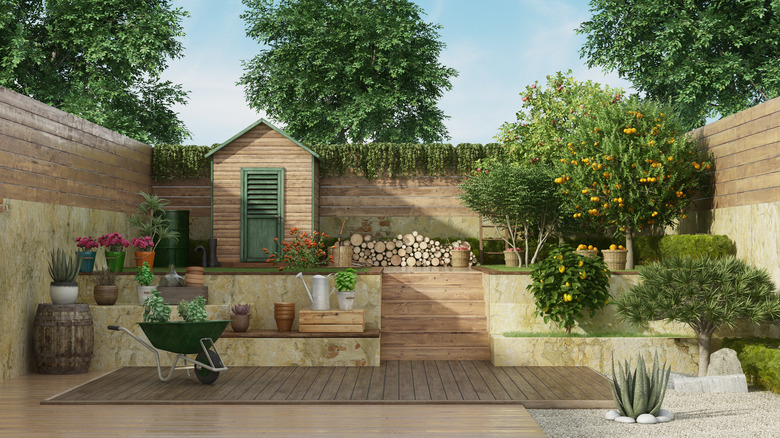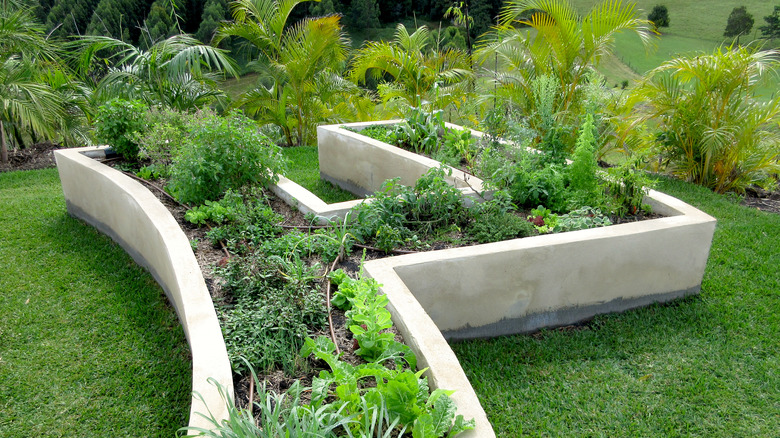Why You Shouldn't Use A Pressure Washer To Clean Your Raised Garden Beds
Raised beds are a great way to do some gardening without having to dig in the ground. This is especially helpful if the soil in your yard isn't suitable for gardening for a variety of reasons. One trend that has become popular recently is rendering raised beds by applying a coating to seal them and make them more permanent, creating a planter. Caring for a rendered bed requires a bit of know-how, and one important thing to remember is to avoid using a pressure washer to clean it. The intensity of the water blast from a pressure washer can damage your rendered planter.
Most rendered beds are constructed with materials to help them remain strong and resistant to moisture. Rendered beds also usually have some sort of waterproof barrier applied to help prevent cracking or water damage. This means that ordinary weather conditions shouldn't damage them. Some home improvement and garden sites even recommend using a pressure washer to clean them — but high pressure from a pressure washer might crack the surface and allow moisture in, which could cause stains or further damage.
How to clean your rendered planters
How to clean your rendered planter depends partly on how dirty it is. If the surface has a fair bit of dirt and grime, you can wash it by hand. Good old-fashioned soap and water is useful for cleaning most surfaces, but it may not be sufficient for cleaning the surface of your rendered planter or raised bed if you're just using a sponge. Try using a soft-bristled brush for some good solid cleaning power. A degreasing soap like Dawn dishwashing liquid will help remove any oily stains. Adding a small amount of bleach to your soapy water can help whiten the surface if you have a bright white planter.
Citrus-based cleaners like Citrasolv are also good for this kind of surface; their acidic ingredients dissolve grease and mildew, but are safe to use. You can use the soft-bristled brush with these cleaners also, and may need to wet the brush a bit to get some lather going. Always rinse the surface thoroughly when done washing using a hose turned to a gentle spray. Doing this project on a sunny dry day will help the surface dry out sooner and prevent any formation of mold or mildew. If you have mold or mildew build-up on the rendered surface of your planter bed, you'll need to do some specific things to clean it.
Cleaning mold or mildew from rendered surfaces
If your rendered planters or raised beds have mold or mildew, you need a special cleaner. A fungicidal wash is the most effective way to get rid of these stains and prevent them from returning. Over time, mold, mildew, or other fungus can damage your rendered surface, so it's important to prevent any build-up if possible. Using these products to clean your raised bed planters is similar to using soap and water or other liquid cleaning products.
Use a soft-bristled scrub brush to firmly scrub the entire surface and loosen any accumulated mold, mildew, or algae. Leave the product on for 15-20 minutes to let some of its protective action soak in. Then rinse with your hose. If you see any remaining spots of mildew or mold remaining, simply scrub and rinse those surfaces again. Diluted vinegar is a good cleaner that can also combat mold. Use white vinegar and scrub it with a brush. Leave it on a bit longer, up to 30 minutes, then rinse with water. Again, doing this on a sunny and dry day means the surface will dry clean faster.

